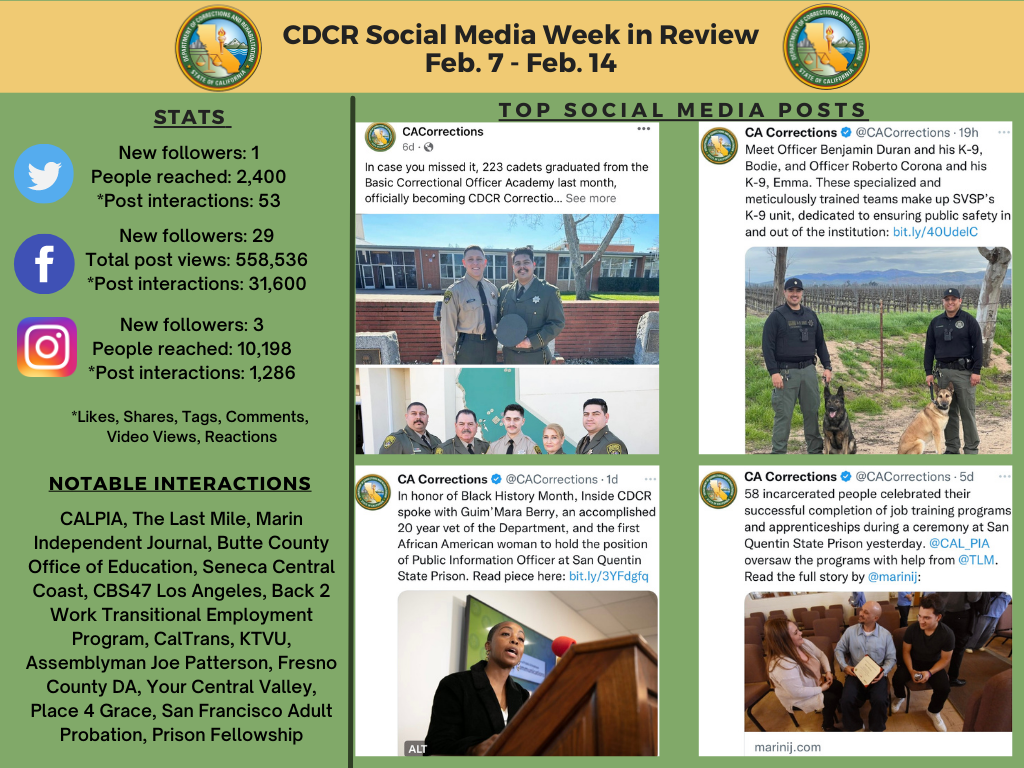Three Questions with…
Associate Warden Amber Williams
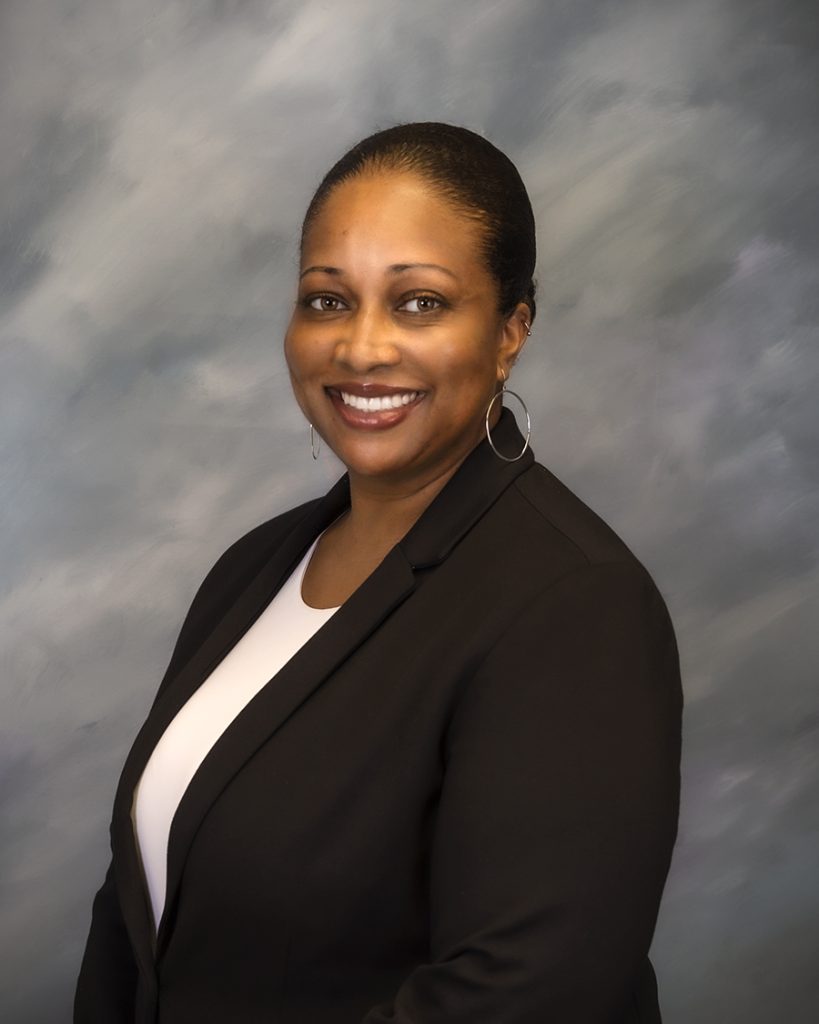
For today’s Black History moment, CDCR is featuring Associate Warden (AW) Amber Williams. In March, AW Williams will celebrate 20 years of dedicated service with the department.
“To me, CDCR is a career that has allowed me to work with people of diverse backgrounds who share the same mission to house and rehabilitate incarcerated people in a safe and professional environment,” said AW Williams.
Her notable career began at CDCR’s Correctional Peace Officer Academy in March 2003. She successfully graduated as a Correctional Officer (CO) in June 2003. From June 2003 to January 2017, she rose through the ranks of CO, Correctional Counselor I, and Correctional Counselor II. Her career advancements took her to four different institutions (Salinas Valley State Prison, California Correctional Institution Substance Abuse Treatment and Facility State Prison, Corcoran, and Avenal State Prison) and CDCR headquarters. In January 2017, she promoted to Captain and in May 2020 promoted to AW. Currently, she is acting Chief Deputy Warden at North Kern State Prison.
As AW Williams promoted within CDCR, she realized she served as an example to women and people of color of what can be accomplished.
“I understand how my decisions, the paths I have taken, and my accomplishments are viewed by my family members, friends, as well as my peers,” she said. “I am motivated to become the most successful person I can become.”
What does Black History Month mean to you?
Black History Month means a couple of different things to me. Most importantly, it’s more than celebrating the history and accomplishments for 28 days or 29 days during a leap year. Black History Month is a time for people of all races to educate themselves on the importance of the struggles, trials, and tribulations of African Americans. This month is also a time for people of all races to educate themselves of the past, present, and current accomplishments African Americans have contributed to society.
Black History Month is important to celebrate because it brings attention to the history of the contributions of African Americans. For example, the celebration of Black history brings attention to significant leaders like Carter G. Woodson, Martin Luther King Jr., Rosa Parks, and Malcom X, to name a few. There is so much more to Black history than the names that we commonly know.
Also, Black history is important because of my ancestors. In fact, Black history affected my parents, grandparents, and great grandparents as they endured the early stages of Black history growing up in the segregated south of New Orleans, LA.
As an adult, I visited the Ormond Plantation (a French Creole, West Indies Style Plantation built in 1789) located in Destrehan, Louisiana, as well as the Whitney Plantation located in Edgard, Louisiana, where generations of Africans and their descendants were enslaved. Both visits were eye-opening experiences. Oftentimes, people think of slavery when Black History is referred to, but people can learn that Black History is a history that has intertwined itself into all races.
What are your proudest career moments with CDCR?
I have had many special moments during my career, but there are two that stand out the most. In 2018, I was part of a group of ten CDCR Captains who were invited to the Governor’s mansion. We met with former California Governor Jerry Brown to discuss CDCR’s current state and where the state of California was headed with CDCR.
My other special moment involves being selected to be a part of the Government Alliance on Race and Equity (GARE) Steering Committee. In doing so, GARE has allowed me to provide leadership and guidance to CDCR staff throughout the agency with information on the Diversity, Equity, & Inclusion efforts for more inclusivity within CDCR.
What has been your biggest inspiration?
My biggest inspirations are my mom and dad. Seeing my parents’ determination growing up, along with being told you can be anything as long as you work hard, has given me the drive to become the person I am today.
Bonus! Fun facts about AW Williams:
- Traveling to see family is a passion. She often visits family in, Seattle, New Orleans, Chicago, and Cincinnati.
- She is a huge foodie! She loves to embark on new culinary experiences.
What’s New?
Ironworker shares journey on CDCR Unlocked podcast

In this week’s episode of CDCR Unlocked, Joseph Sickler recounts his journey of rehabilitation. He shares his growth from crime to incarceration, and how education helped him grow as an ironworker and a father.
Hear this and all episodes on RSS.com and wherever you listen to podcasts.
Revised face covering guidance
The department has updated facial covering requirements for CDCR, California Correctional Health Care Services (CCHCS), and Division of Juvenile Justice (DJJ) institutions/facilities. The updated facial covering guidance applies to all individuals who live in or enter an institution/facility, regardless of COVID-19 vaccination/booster status. This includes residents, staff, contractors, volunteers, and visitors.
Employees required to wear a tight-fitting respirator are determined based on a job hazard analysis of the worksite and worksite tasks or other tasks that their classification may require. Note: Staff identified in the Department Operations Manual (DOM), Section 31020.8, Respiratory Protection Program, who are required to wear respirator(s) shall comply with California Code of Regulation (CCR), Title 8, sections 5144 and 5199.
In Our Institutions

Acting VSP Warden returns to high school for Junior Ethics Day
Valley State Prison (VSP) staff recently attended a Junior Ethics Day Event at Corcoran High School. Representatives from the military, law enforcement, and CALFIRE served as guest mentors, fielding questions from interested students.
The event created a perfect opportunity for students to speak directly with a variety of active first responder professionals. Students and mentors discussed topics relating to workplace ethics, conduct and professional behavior. Students gained insight and were provided with resources regarding mental health wellness, exercising self-control, and resilience.
“Events like today are essential in teaching a young person how to use logic instead of emotion when making decisions and interacting with people,” shared Lieutenant E. Guthery. “This will assist them not only in their professional careers but also in their personal life.”
It was a homecoming of sorts for VSP Warden, (A) M. McVay, who graduated from Corcoran High in 1996.
“It was great to be back in Corcoran and have the opportunity to meet with the youth from my old high school,” he said. “We had open discussions with the students on business ethics and how to handle the dilemmas they may face in the future.”
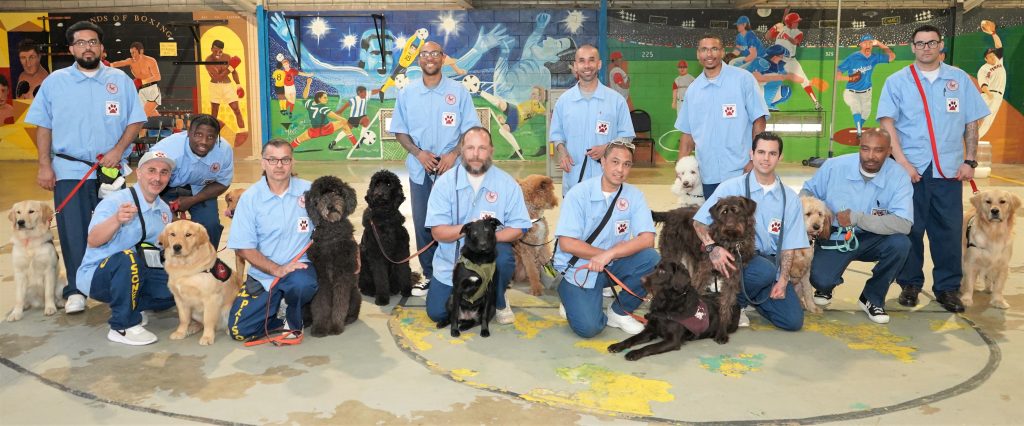
Pawz Behind Wallz is changing lives at CIM
Since 2015, selected incarcerated people from California Institution for Men (CIM), in partnership with the nonprofit Canine Support Team (CST), have helped train dogs for disabled persons. Trainers from the Pawz Behind Wallz service dog program, along with their four-legged companions, recently demonstrated some of these skills.
The trainers demonstrated basic commands like sit, down and stay. They also shared advanced commands such as retrieving a dropped ID card or flipping a light switch.
“When these dogs graduate the program and are placed with their disabled person, they are able to open and close doors, help their client remove shoes and socks, retrieve a drink from the refrigerator and perform many other trained tasks, helping their client live a complete life,” said Warden (A) John Merchant.
“These dogs have brightened the lives of countless disabled persons, including many disabled veterans,” said Mike Fairbanks. He works as CIM’s Property Controller and doubles as a self-help sponsor. Disabled veterans receive approximately 80% of service dogs trained at CIM.
Trainers expressed how working with CST and self-help sponsors helps their rehabilitation and overall outlook on life. CST staff and sponsors thanked the trainers for their hard work that is improving the lives of so many.
Parole Operations
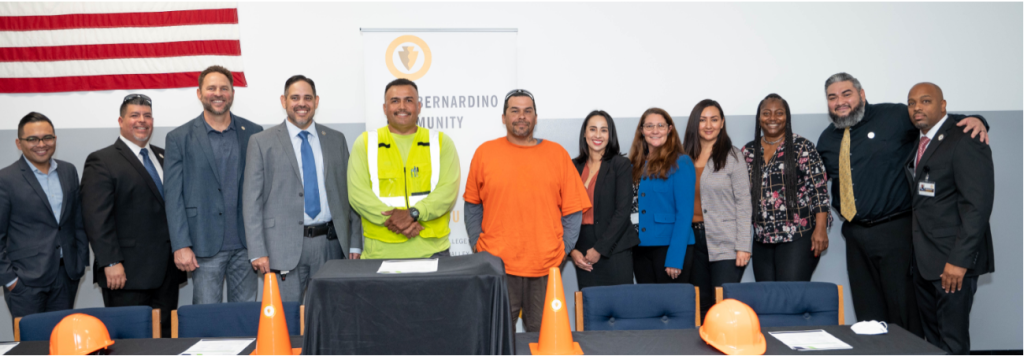
Celebrating success with DAPO
The Caltrans Transitional Work program’s new office location is now open at the San Bernardino Parole Unit.
The Division of Adult Parole Operations (DAPO), in partnership with San Bernardino Community College District (SBCCD) Economic Development and Corporate Training (EDCT), hosted a ribbon cutting ceremony.
Parole Agent II (Specialist) Anthony Marquez and Parole Service Associate Laura Evans worked closely with SBCCD EDCT Manager of Workforce Development Eddie Rubio and his team to provide transitional work for those released from prison for the past five years. The program provides a rapid response to those just released from prison, with assistance in gaining employment. It provides job readiness training and assists with customized training in industry-demanding jobs such. These include construction, warehouse logistics, arborist training, and more.
Delegates and representatives from DAPO and SBCCD EDCT attended the event to support and celebrate the collaboration. SBCCD’s Vice Chancellor Dr. Nohemy Ornelas, Marketing and Public Affairs and Governor Angel Rodriguez, Interim Executive Director Deanna Krehbiel, and EDCT Justice Involved Team were in attendance. DAPO’s San Bernardino Parole Administrator (A) Ronald Warner, San Gabriel Valley Parole Administrator Tiffany Johnson, Parole Agent III Sheila Green-Beck, and San Bernardino parole agents were in attendance to support the collaboration.
Victims’ Services
Victims Services staff expand outreach
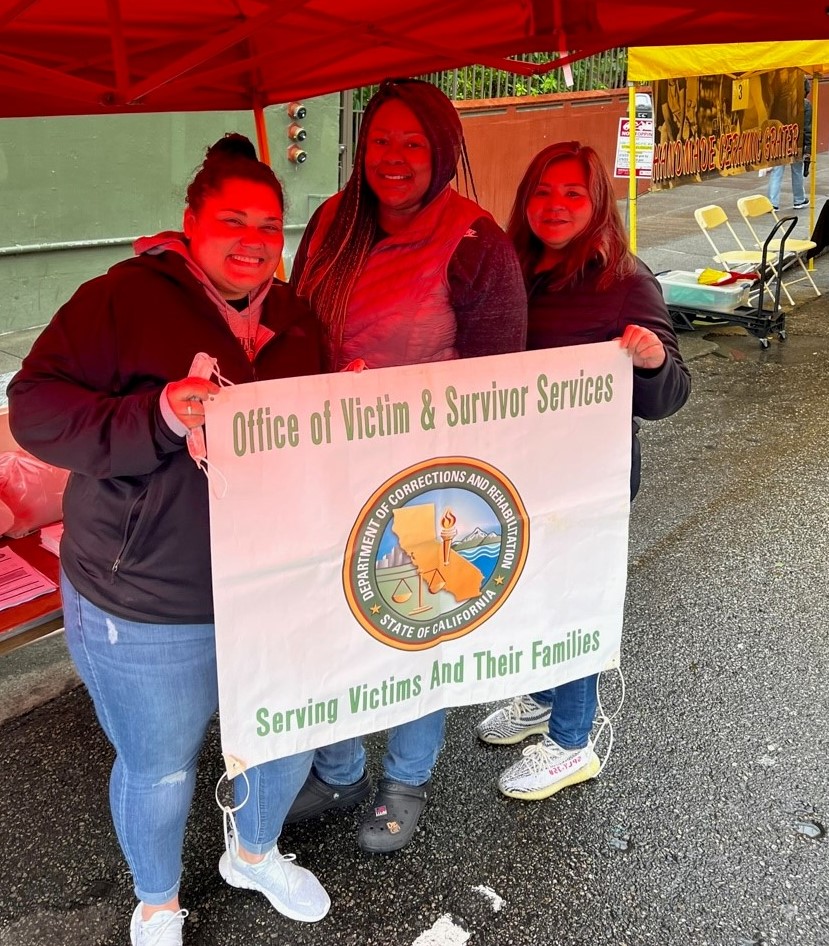
CDCR’s Office of Victim and Survivor Rights and Services (OVSRS) attended a community street fair event in San Francisco. The Chinese Chamber of Commerce hosted the fair in celebration of the 2023 Year of the Rabbit. Hundreds of local and state services, including nonprofit groups and government agency resources, attended.
OVSRS staff had a great time attending the fair and sharing information about services. Many people stopped by their table, asking questions and gathering information. OVSRS was able to take many outreach materials in Mandarin and Cantonese.
ChatBot program enhances services
OVSRS is proudly launching a ChatBot that will be available via the Live Chat (Comm 100) direct messaging service on the OVSRS website. The computer program simulates and processes human conversation (either written or spoken).
Victims can now get simple, quick information they may need without a lengthy conversation or hold period – which may be difficult for those who have gone through traumatic experiences. The Bot also directs the public user to the appropriate live specialist in the unit to assist.
With this launch, OVSRS looks forward to assisting many more victims throughout California with all OVSRS services. These include requests for various notifications, assistance with restitution collections and information about participation in the parole board hearing process. Creating this ChatBot allows service after hours and on weekend and holidays.
OVSRS continues to strive to find more ways to reach underserved communities and underreported populations. OVSRS’ Victims of Crime Act Grant has funded this project and service.
In the Media

Exhibition showcases art from Cal Poly Humboldt Prison Arts Collective
“More Than A Number” is an exhibition that features more than a dozen artists from Pelican Bay State Prison in Crescent City. Paintings, paper-craft, crochet, beadwork, drawings, and carvings will be on display at Cal Poly Humboldt’s Reese Bullen Gallery from Feb. 16 to March 11.
The gallery also hosts large prints of the murals inside the yard at Pelican Bay State Prison, offering a chance to see artwork that most people do not get to see.
An opening reception will be held Thursday, Feb. 16 from 4:30-6 p.m. at the Reese Bullen Gallery. Light refreshments will be served, along with an introduction to the artworks by Prison Arts Collective (PAC) Humboldt Chapter organizers and a past program participant.
Read more about the Bullen Gallery exhibition.
Ear Hustle podcast brings stories of reality, redemption from San Quentin
The Pulitzer Prize-nominated Ear Hustle podcast features stories of the daily realities of life inside California’s San Quentin State Prison. Interview with Earlonne Woods and Nigel Poor.
San Quentin celebrates training program graduation

In a small ceremony in a prison chapel, 58 inmates at San Quentin State Prison crossed a stage in front of family and fellow prisoners after finishing job training programs or apprenticeships.
Except for the dress code — all the graduates wore blue clothes stamped with prison initials — it was a graduation like any other, with speeches from administrators and current and former graduates, and opportunities for the honorees to pose for photos with the educators and officials conferring the certificates.
The California Prison Industry Authority oversaw the training programs with help from the Last Mile, a San Francisco nonprofit that provides tech training to prisoners and mentorship once they’re released.
“You’ve dedicated yourselves to completing something difficult,” Oak Smith, the prison warden, told the honorees at the event on Wednesday. “You’re on the right path, working in a positive direction, and I know that many of you will be success stories in the future.”
‘Ready for Life’ reentry program provides crucial support to break the cycle
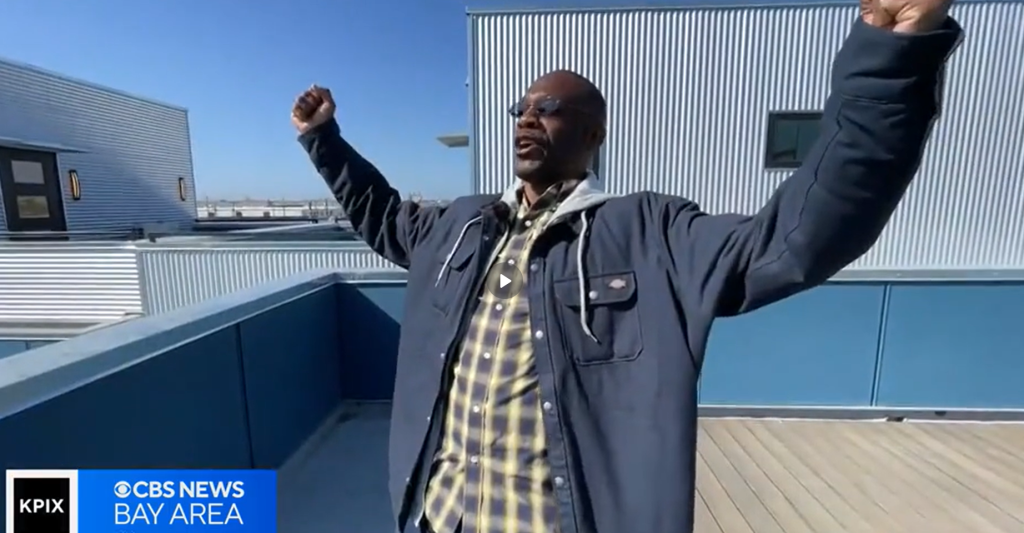
Every year, 30,000 people are released from jails and prisons in California. More than half of them will end up back behind bars. But a new program in Oakland aims to break that cycle, using the experience of those who were once on the inside.
“This is one of the bedrooms,” said Lamar Simms as he proudly toured the brand-new building he will soon call home. He got his release from prison after more than 30 years, but was accepted into an innovative program because of the hard work he put in to change his life while behind bars.
“So now that I’m out here and I’m part of this program,” he said, “I feel that everything I did, I succeeded in it.”
The opening of the new facility in Oakland also signals a new approach to dealing with those being released from jail. The Ready for Life reentry program is operated by a non-profit called Creating Restorative Opportunities and Programs (CROP) and will feature psychological counseling, job training and placement, a $1,000 per month stipend and – perhaps most important of all – 12 months of housing at the complex.
Top Inside CDCR Stories
Duenas brothers proudly wear badge
Lomax, Porter have guided cadets for 30 years
CDCR is tradition for Morales family
Wellness effort sees sandwich shop at ASP
Start your Correctional Officer career
Social Media
